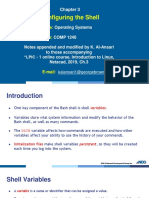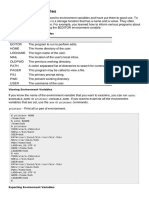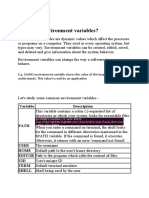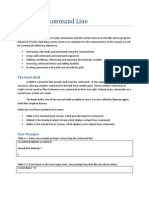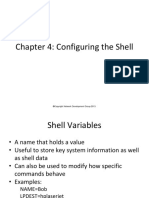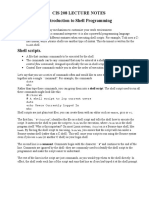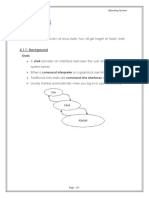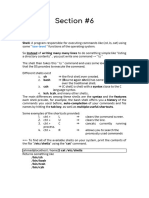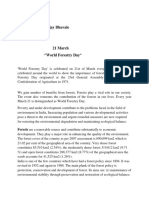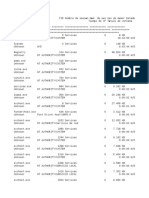0% found this document useful (0 votes)
119 views3 pagesLinux Ex3
This document discusses environment variables in Linux shells. It describes two types of environment variables - global variables that are visible to child processes, and local variables only visible within the current shell. Methods are provided for setting, exporting to make global, and removing both local and global variables. Array variables are also described where multiple values can be stored and accessed individually or as a whole in an environment variable.
Uploaded by
Sushant MoreCopyright
© © All Rights Reserved
We take content rights seriously. If you suspect this is your content, claim it here.
Available Formats
Download as DOCX, PDF, TXT or read online on Scribd
0% found this document useful (0 votes)
119 views3 pagesLinux Ex3
This document discusses environment variables in Linux shells. It describes two types of environment variables - global variables that are visible to child processes, and local variables only visible within the current shell. Methods are provided for setting, exporting to make global, and removing both local and global variables. Array variables are also described where multiple values can be stored and accessed individually or as a whole in an environment variable.
Uploaded by
Sushant MoreCopyright
© © All Rights Reserved
We take content rights seriously. If you suspect this is your content, claim it here.
Available Formats
Download as DOCX, PDF, TXT or read online on Scribd
/ 3



